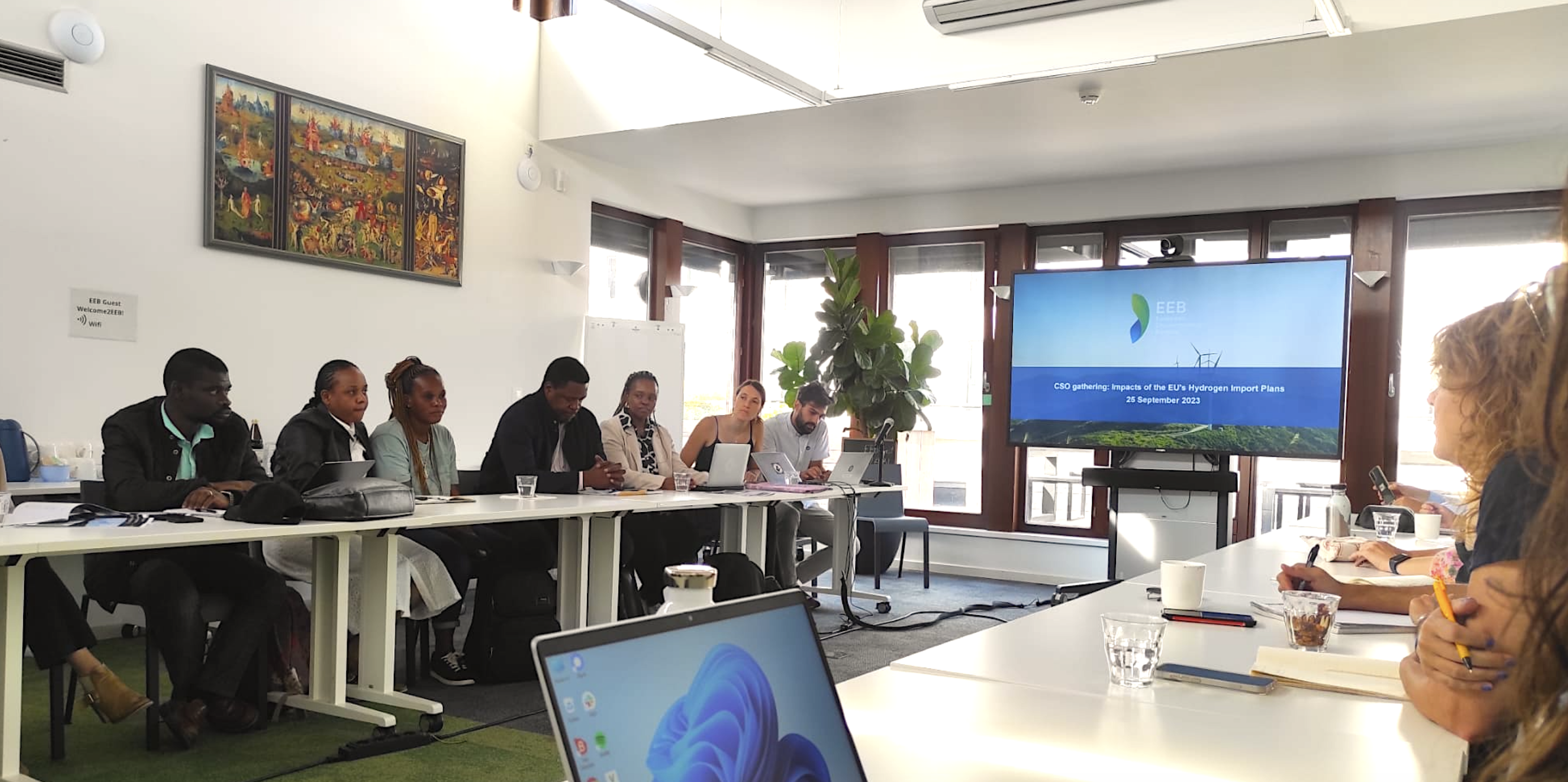A Devastating Dam in DR Congo – To Quench Europe’s Thirst for ‘Green’ Hydrogen
The EU has grand plans for hydrogen, but the impacts on many communities and on the climate will not be so grand at all
By 2030, the EU plans to generate 10 million tons of hydrogen, and import an additional 10 million tons from other countries. While there is a lot of talk about ‘green’ hydrogen, i.e. hydrogen made by using large amounts of renewable energy, there will also be a substantial amount of fossil fuels-based hydrogen, also called ‘gray’, ‘black’ or ‘blue’ hydrogen.
While often hailed as clean and as a promising climate solution, ‘green’ hydrogen comes with several drawbacks, and can directly threaten the livelihoods of people in the global south.
In September, a delegation of experts and impacted community members from different African countries visited Brussels, sharing their knowledge and worries about the impacts of Europe’s hydrogen plans, particularly on the Democratic Republic of Congo (DRC).

While there are plans to export ‘green’ hydrogen from several different African countries, the example of the DRC is definitely a cautionary tale on many levels. ‘Green’ hydrogen would be generated with hydropower from a gigantic dam (called the Inga dam) which, once constructed, would be the biggest dam on our planet. The government of the DRC regards the Inga Project as a substantial hydroelectric initiative that has attracted the involvement of Chinese and Spanish companies.
The displacement of local communities is a common consequence of large-scale infrastructure projects. Affected communities often receive insufficient compensation and have limited say in a decision-making process that disrupts their lives and livelihoods.
Part I and II of this dam were already built years ago, flooding land, displacing people and forcing those who stayed in the area to walk for hours to get access to clean water. Angelique Mvuezolo brought the perspective of communities threatened by Inga dam part III directly to Brussels, highlighting how the first two parts of the dam were already forced on people with false promises. She finds the government promise that there will not be any people displaced hard to believe; The third dam would flood the entire Bundi valley and might even affect land beyond DRC’s borders.
And Eric Kassongo from CODED, the Centre Congolais pour le Droit du Développement Durable, decried a severe lack of transparency around the project. Kassongo was able to explain what is known about the links between the Inga dam project and Europe. An agreement to develop Inga dam III was signed in 2018 with by a consortium led by the Chinese Three Gorges and Spanish Actividades de Construccion y Servicios (ACS), the latter having links to the European Investment Bank (EIB) that had already been involved in the development of Inga dam part I. Also Deutsche Bank and funds in other European countries have ties to Inga dam III.
The potential construction of large hydroelectric dams in the DRC raises alarms about the environmental consequences as well. These projects can disrupt ecosystems and lead to a release of climate-wrecking methane emissions. The Congo River, which would be dammed up, serves as an important carbon sink as it carries minerals into the ocean, which puts the climate benefit of the gigantic projects into question. Droughts and floods, made stronger and more likely by climate change, are not only devastating in its impact on communities, but also increase the uncertainties around the entire project – a point highlighted by Siziwe Mota from International Rivers.
Only a very small fraction of the people in the Democratic Republic of Congo have access to energy. Still, considerable shares of this new mega-hydropower project are dedicated to splitting water into oxygen and hydrogen. The hydrogen would then be exported to Europe, but in which form and via which export and import facilities is still unclear. The neocolonial nature of such undertaking is impossible to negate, and Europe risks continuing a highly unjust model of exploitation by failing to block support for Inga dam and other similar projects in the global south.
It is crucial for European decision makers to look beyond the label of ‘green’ hydrogen, and to establish a much safer definition on what truly green energy actually is. They also fail to consider energy poverty, or lack of access to energy, in the countries the EU plans to source its hydrogen. It seems certain that the EU is dramatically inflating its projections for green hydrogen production. These projections should be drastically downscaled, for the sake of the people and the future of our only planet.


